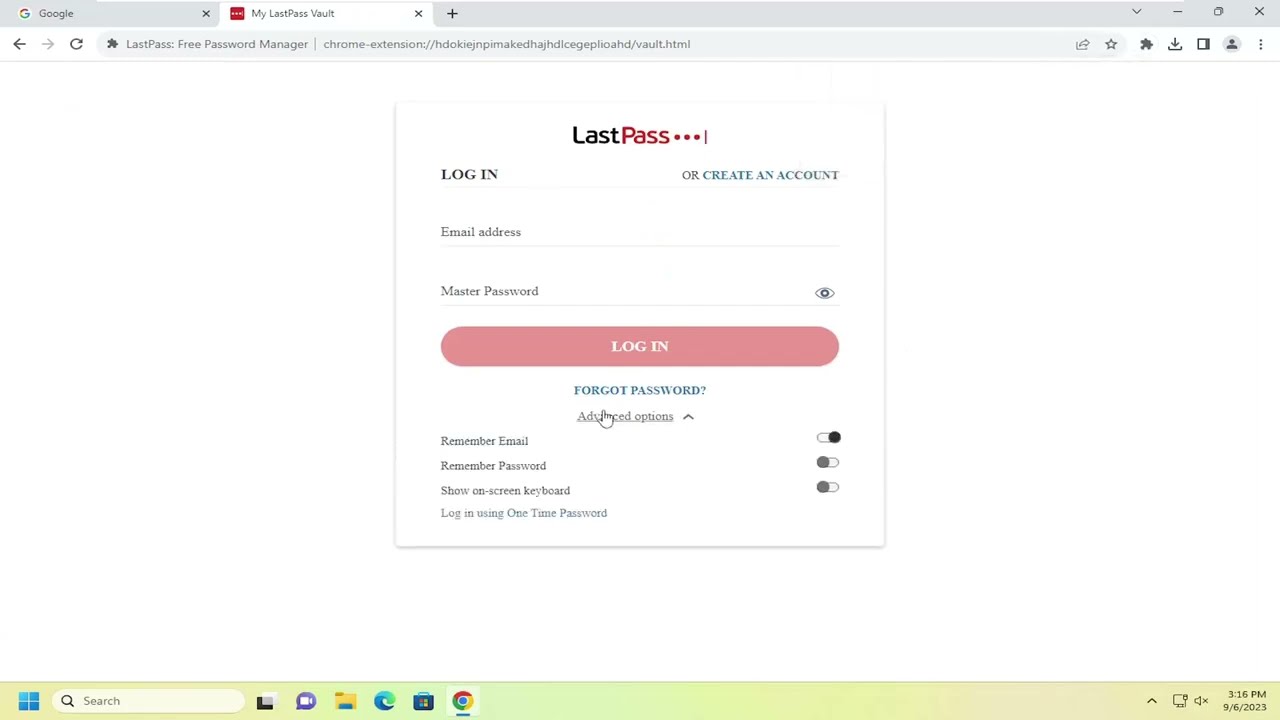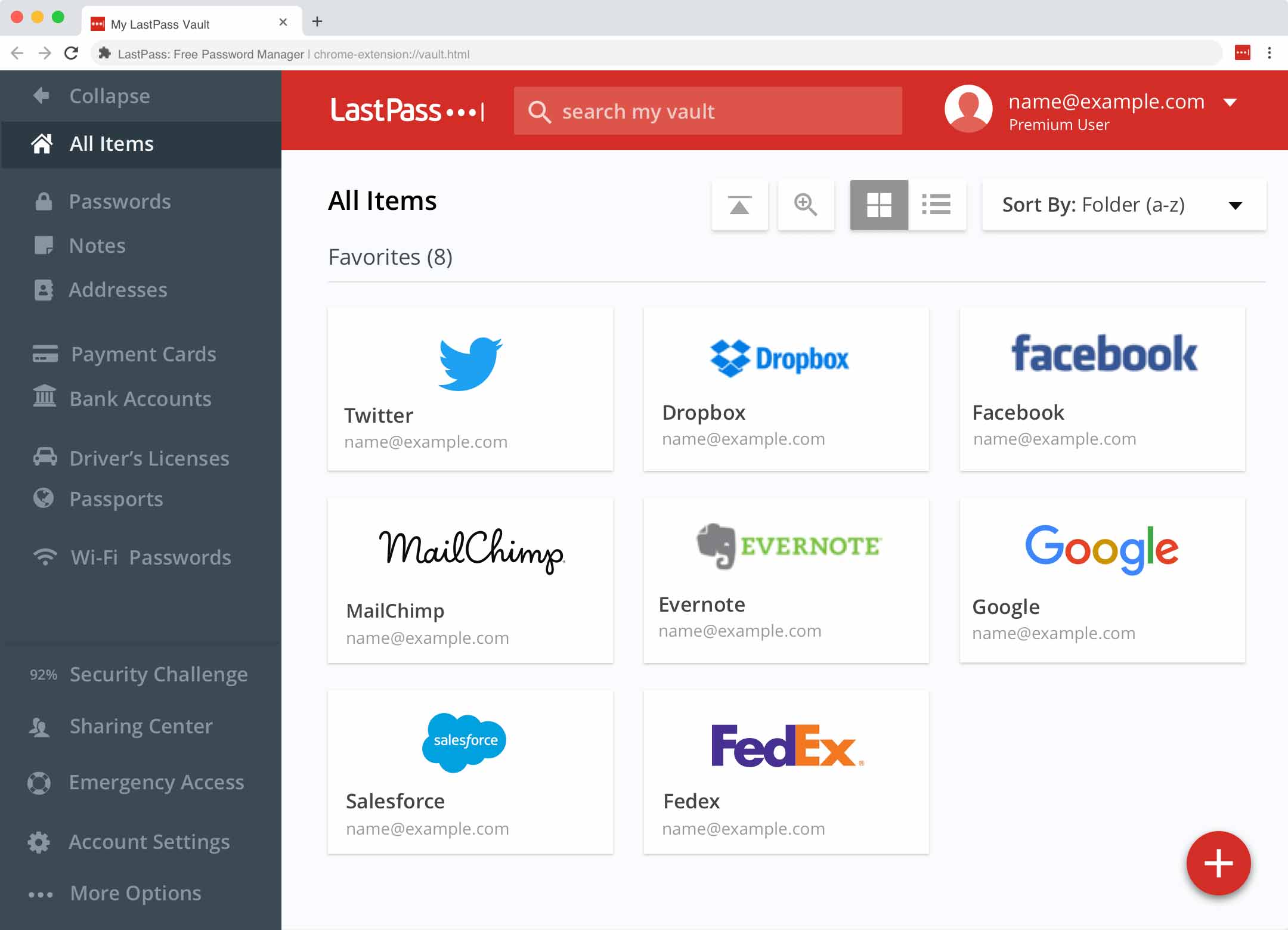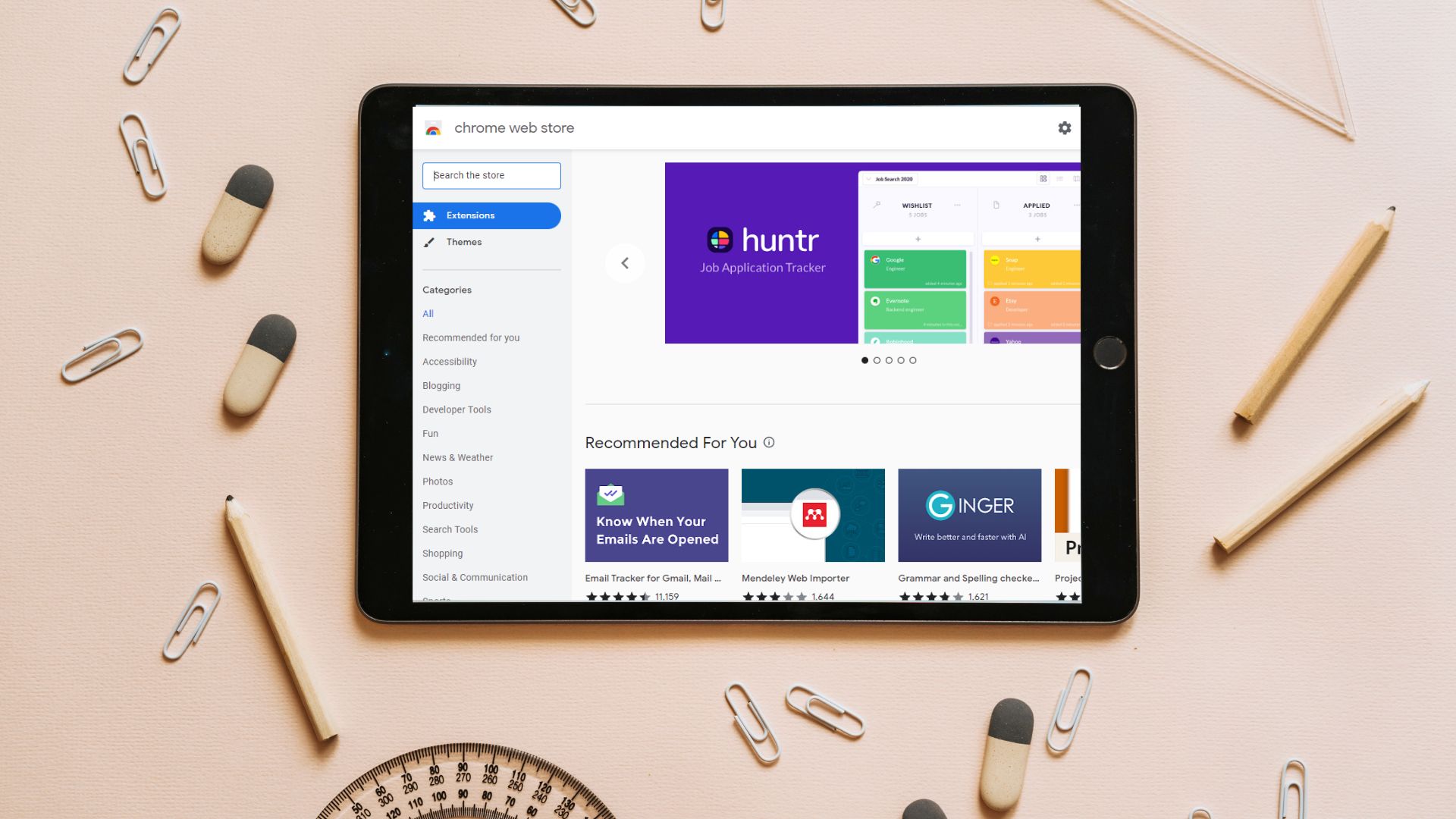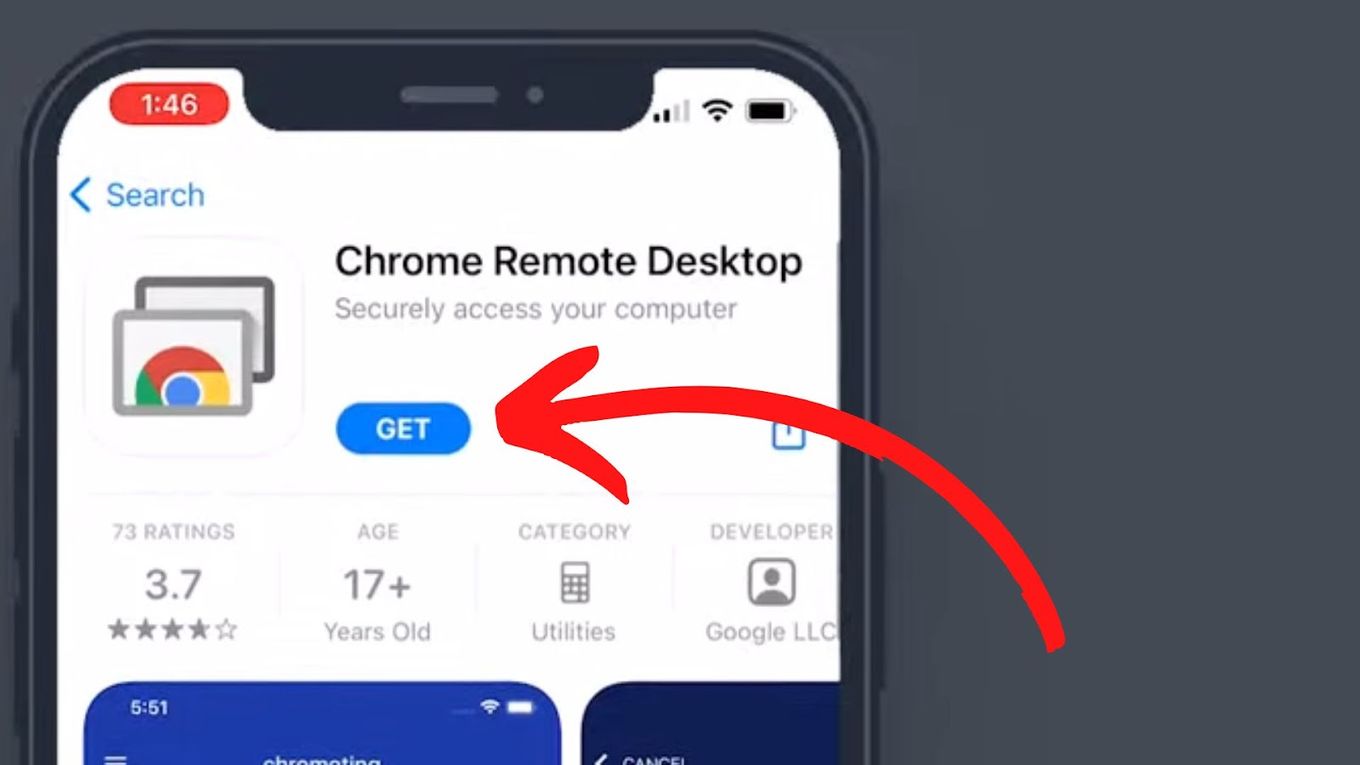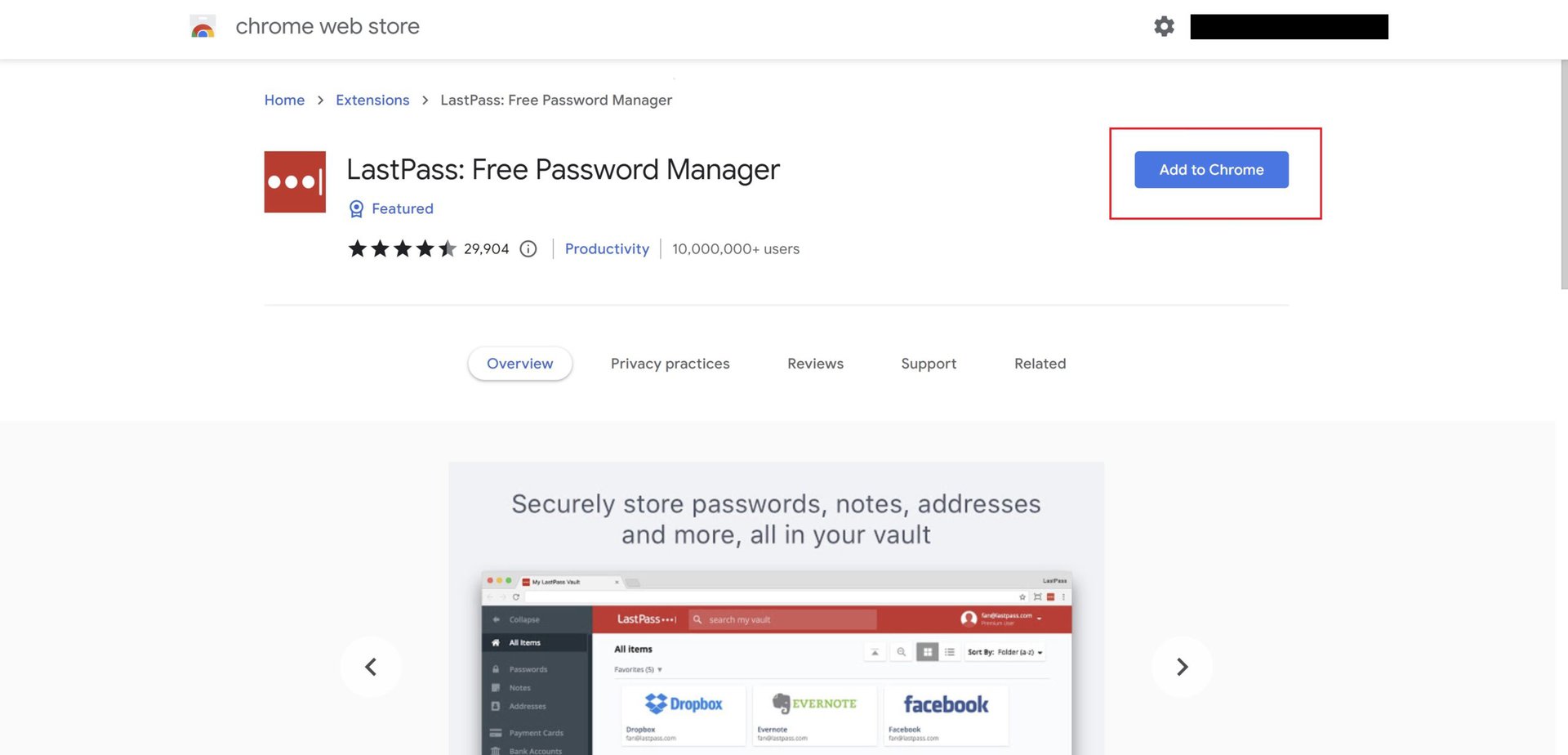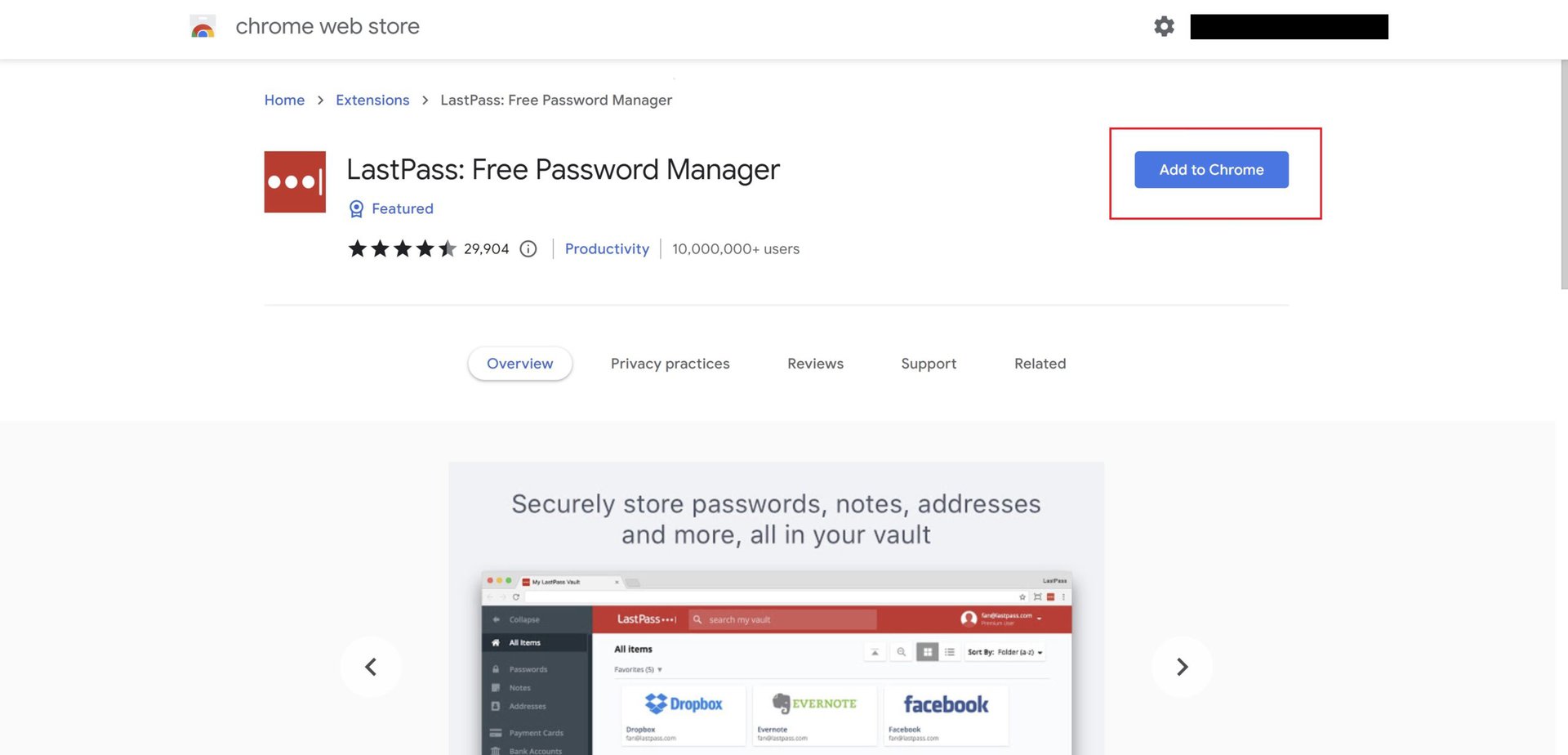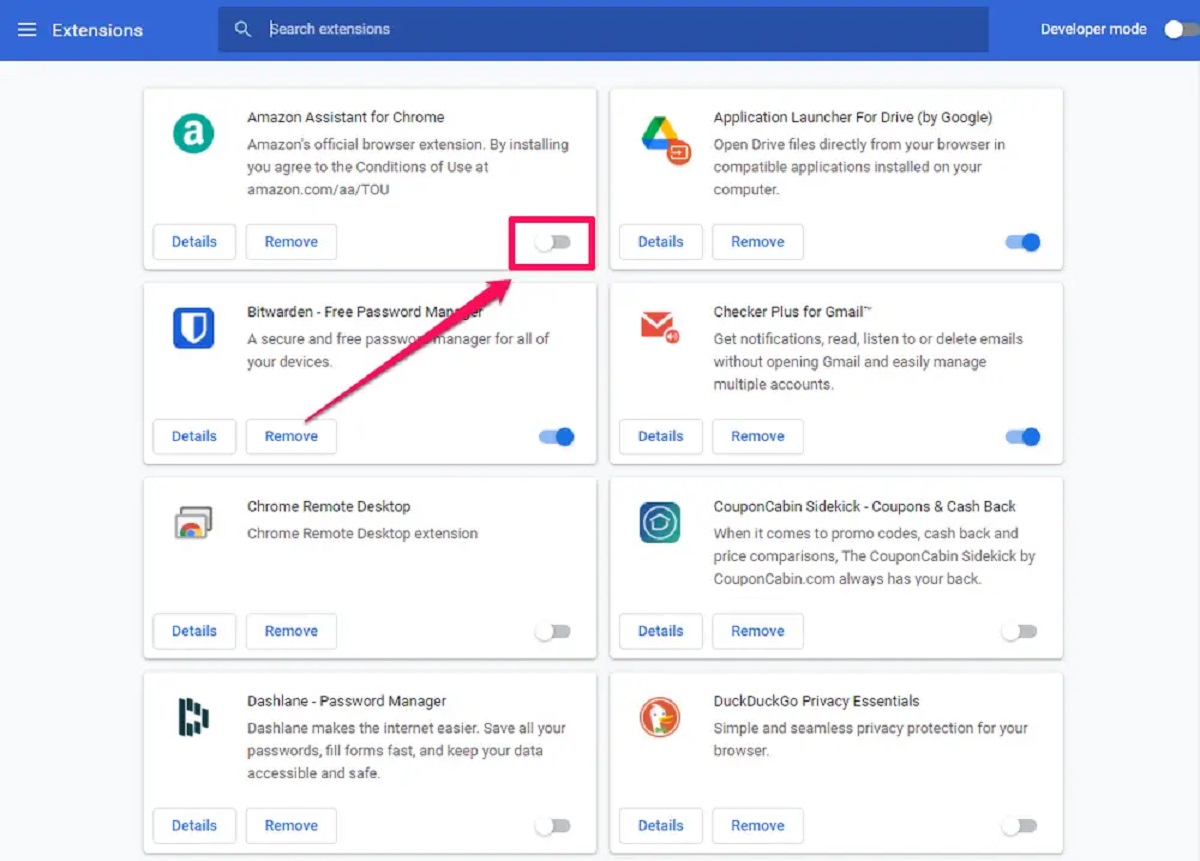Introduction
Uninstalling browser extensions can be a straightforward process, but it's essential to follow the correct steps to ensure a seamless removal. If you're considering removing the LastPass extension from your Chrome browser, you're in the right place. LastPass is a popular password manager that offers convenient features for securely storing and managing passwords. However, if you've decided to part ways with this extension, whether for personal preference or to explore alternative options, this guide will walk you through the steps to uninstall LastPass from Chrome.
By following the steps outlined in this article, you can effectively remove the LastPass extension from your Chrome browser. Whether you're transitioning to a different password manager or simply streamlining your browser extensions, understanding the uninstallation process is crucial. With clear instructions and a few simple clicks, you'll be able to remove LastPass from Chrome without any hassle.
Now, let's delve into the step-by-step process of uninstalling LastPass from Chrome, ensuring that you can navigate through the removal process with ease and confidence. Whether you're a seasoned Chrome user or just getting started with browser extensions, this guide will equip you with the knowledge to manage your extensions effectively. Let's get started with the first step: opening Chrome and locating the LastPass extension.
Step 1: Open Chrome and go to the LastPass extension
To begin the process of uninstalling the LastPass extension from your Chrome browser, the first step is to open Chrome and locate the LastPass icon. Chrome provides a user-friendly interface for managing extensions, making it easy to access and modify your installed add-ons.
-
Launch Chrome: Start by opening the Chrome browser on your computer. You can do this by clicking on the Chrome icon in your desktop or taskbar, or by searching for "Chrome" in your computer's applications.
-
Locate the LastPass icon: Once Chrome is open, look for the LastPass icon in the top-right corner of the browser window. The LastPass icon typically appears as a small, colorful icon representing the LastPass logo. It may be located next to the address bar or within the extensions area, depending on your Chrome settings.
-
Access the LastPass extension: Click on the LastPass icon to access the extension. This action will open the LastPass menu, allowing you to view and interact with the features and settings of the LastPass extension directly within Chrome.
By following these steps, you can easily open Chrome and navigate to the LastPass extension, setting the stage for the subsequent steps in the uninstallation process. With the LastPass extension accessible within Chrome, you're ready to proceed to the next step of removing LastPass from your browser.
Now that you've successfully opened Chrome and located the LastPass extension, you're prepared to move on to the next step in the uninstallation process. Let's continue to the next step, where you'll initiate the removal of LastPass from Chrome.
Step 2: Right-click on the LastPass icon and select "Remove from Chrome"
After successfully accessing the LastPass extension within Chrome, the next crucial step in the uninstallation process is to initiate the removal of LastPass from your browser. This can be accomplished by following a simple yet effective method within the Chrome interface.
To begin, locate the LastPass icon in the top-right corner of the Chrome browser window. Once you've identified the LastPass icon, proceed by right-clicking on the icon using your mouse or trackpad. This action will prompt a context menu to appear, presenting you with various options for managing the LastPass extension directly within Chrome.
Within the context menu that appears after right-clicking on the LastPass icon, look for the option labeled "Remove from Chrome." This option is specifically designed to facilitate the uninstallation of the LastPass extension from your browser. By selecting "Remove from Chrome," you'll initiate the removal process, signaling Chrome to uninstall the LastPass extension from your browser environment.
Upon selecting "Remove from Chrome," Chrome will prompt you to confirm the action, ensuring that you intend to proceed with the removal of the LastPass extension. This confirmation step serves as a safeguard, preventing accidental removal of extensions and allowing users to verify their intent before initiating the uninstallation process.
By right-clicking on the LastPass icon and selecting "Remove from Chrome," you're taking a decisive step towards uninstalling the LastPass extension from your browser. This straightforward method streamlines the removal process, enabling you to manage your Chrome extensions with ease and efficiency.
With the selection of "Remove from Chrome," you've effectively signaled Chrome to begin the uninstallation of the LastPass extension, setting the stage for the subsequent steps in completing the removal process. Now that you've initiated the removal of LastPass from Chrome, you're ready to proceed to the next step, where you'll confirm the removal and finalize the uninstallation process.
By following these steps, you can seamlessly navigate through the process of removing the LastPass extension from your Chrome browser, ensuring a smooth and efficient uninstallation experience. With the removal initiated, you're well on your way to completing the uninstallation of LastPass from Chrome, paving the way for a streamlined browser environment tailored to your preferences.
Step 3: Confirm the removal of LastPass from Chrome
After initiating the removal of the LastPass extension from your Chrome browser, the next pivotal step is to confirm the uninstallation to finalize the process. This confirmation step serves as a crucial checkpoint, ensuring that the removal of LastPass from Chrome aligns with your intentions and preferences.
Upon selecting "Remove from Chrome" in the previous step, Chrome will prompt a confirmation dialog to verify your decision to uninstall the LastPass extension. This dialog serves as a safeguard, preventing accidental removal of extensions and providing users with the opportunity to confirm their actions before proceeding.
When the confirmation dialog appears, it will typically display a message seeking your confirmation to remove the LastPass extension from Chrome. This message serves as a final checkpoint, allowing you to review and confirm the removal before Chrome executes the uninstallation process.
To confirm the removal of LastPass from Chrome, simply proceed by clicking on the "Remove" or "Confirm" button within the confirmation dialog. This action signifies your intent to proceed with the uninstallation, prompting Chrome to execute the removal process and eliminate the LastPass extension from your browser environment.
By confirming the removal of LastPass from Chrome, you're actively participating in the finalization of the uninstallation process, ensuring that the extension is effectively removed from your browser. This confirmation step empowers users to maintain control over their browser extensions, providing a clear and deliberate process for managing and uninstalling add-ons within Chrome.
With the removal of LastPass confirmed, Chrome will proceed to execute the uninstallation process, effectively removing the LastPass extension from your browser environment. This seamless confirmation step ensures that the uninstallation aligns with your preferences, allowing you to maintain a tailored and efficient browser experience.
By following these steps, you can confidently navigate through the confirmation process, ensuring that the removal of LastPass from Chrome proceeds smoothly and aligns with your preferences. With the removal confirmed, you're well on your way to completing the uninstallation of LastPass from Chrome, paving the way for a streamlined browser environment tailored to your preferences.
Step 4: Restart Chrome to complete the uninstallation process
Once you have confirmed the removal of the LastPass extension from Chrome, it's essential to complete the uninstallation process by restarting the browser. Restarting Chrome serves as the final step in ensuring that the removal of LastPass is fully implemented and integrated into your browser environment.
When you restart Chrome, it allows the browser to refresh and update its settings, ensuring that the removal of the LastPass extension is fully recognized and applied. This step is crucial in completing the uninstallation process, as it enables Chrome to adjust its configuration and remove any residual traces of the LastPass extension from its system.
To restart Chrome, simply close the browser window and relaunch it using your preferred method. You can close Chrome by clicking the "X" button in the top-right corner of the browser window or by using the "Close Window" option from the Chrome menu. Once Chrome is closed, proceed to relaunch the browser by clicking on the Chrome icon on your desktop or taskbar, or by searching for "Chrome" in your computer's applications.
As Chrome restarts, it will refresh its environment and apply the changes related to the removal of the LastPass extension. This process ensures that any remaining components or settings associated with LastPass are effectively removed from Chrome, providing you with a clean and streamlined browser experience.
By restarting Chrome, you're actively completing the uninstallation process, allowing the browser to finalize the removal of the LastPass extension and update its environment accordingly. This step ensures that any lingering elements of LastPass are eliminated, enabling you to transition to a browser environment free from the presence of the removed extension.
With Chrome successfully restarted, the uninstallation of LastPass is fully integrated into your browser, marking the completion of the removal process. You can now navigate through Chrome with the assurance that the LastPass extension has been effectively uninstalled, providing you with a tailored and optimized browser experience.
By following these steps and restarting Chrome, you have successfully completed the uninstallation of the LastPass extension from your browser, ensuring a seamless and efficient removal process. With the removal process finalized, you can now explore alternative extensions or enjoy a streamlined browsing experience tailored to your preferences.









